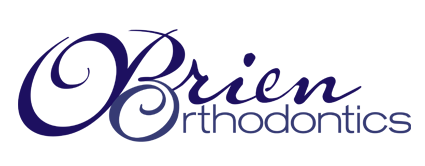So Just How Much Do Braces Cost?
And there we were, my 4 kids and I, at our family dentist's office with glowing reports for the kids' brushing and flossing. And then it happened - a little referral card was handed to me for my oldest who is 8 years old.
The dentist smiled and explained that there may not be enough space for the larger, adult teeth to erupt into her mouth, which could also affect her bite now and long-term.
So he recommended that we see Dr. O'Brien, one of the best orthodontists in Dayton who specializes in braces and Invisalign for children and adults. Needless to say, the drive home was filled with all the questions going through my mind…
How much will braces cost?
Does our insurance cover orthodontic treatment?
Does my child really need treatment now?
Will my child have braces now AND when her adult teeth come in?
Will insurance cover braces twice?
How much will braces cost?
Treatment fees are based on the complexity of treatment involved and the anticipated length of treatment time.
In Ohio, the range for comprehensive orthodontic treatment is $4,000 - $10,000. If treatment is for early, interceptive / Phase 1 orthodontic treatment, the fee can fall somewhere between $2,000 - $4,500.
Typically the fee includes records/imaging equipment used, orthodontic appliances used, the treatment planning expertise/knowledge and experience of the doctor, as well as the retainers after the braces/aligners are removed.
Does our insurance cover orthodontic treatment?
Depending on each individual's/family's insurance policy, orthodontic benefits may or may not be available. If orthodontic treatment is a covered treatment for you, there is usually a percentage of the total treatment fee that is covered, up to a specified maximum amount.
For example, if the total cost of treatment is $6,500 and the policy pays 50% of the total treatment fee up to a maximum of $2,500, then ($6,500 - $2,500) $4,000 is the amount NOT covered by insurance and would be the patient's responsibility to pay.
Is early interceptive/Phase 1 treatment really necessary?
Before the 1980s, the common philosophy in treating patients orthodontically was to let all the permanent teeth come in as crowded as they would be, and IF the teeth were even able to erupt into the mouth, then obtain the necessary space to align the teeth. It was often necessary to extract a few perfectly healthy teeth.
Since that time, it has been learned through extensive research (like that done by our top ortho in Beavercreek/Englewood Dr. O'Brien) that either the dental arch can be reshaped into a broader arch form, or the upper jaw itself can be expanded, thus allowing the larger adult teeth adequate space to erupt.
In addition, this broadening can prevent potential tooth impaction (where the tooth becomes "stuck" in bone, unable to erupt on its own, requiring surgical intervention and orthodontic treatment).
By intercepting these crowded conditions early, orthodontists can prevent more complicated bite problems when the adult teeth come into the mouth.
This can not only reduce treatment time and cost, but often prevent the need for some surgical procedures.
Will my child need braces early AND in the adult dentition?
Not all children require 2 phases of orthodontic treatment. Early Phase 1 treatment does not preclude the need for Phase 2/comprehensive treatment since not all bite problems are addressed during early interceptive treatment. The majority of Phase 1 patients do end up needing a second phase of treatment for comprehensive bite correction, but not all.
Will insurance cover braces twice?
Having 2 phases of orthodontic treatment does not necessarily mean you can submit to your insurance twice. Typically, insurance plans for orthodontic benefits have a lifetime maximum limit amount between $1,000 - $3,000. Therefore, depending on the cost of Phase 1 treatment, you have usually reached your lifetime maximum with that initial interceptive treatment.
However, if not, the remaining benefits can be used in Phase 2 treatment. If you exhaust all orthodontic benefits in Phase 1, and you obtain a new/different insurance plan, whether due to a change in employment, etc., then you would have a new set of orthodontic benefits with that policy's lifetime maximum limit.
One should also be sure to take note in your policy of any age restrictions with orthodontic benefits. Some common cut-off ages are 19 and 26 years, while some plans include adults of any age for benefits.
Our treatment coordinator at O'Brien Orthodontics will always check your insurance benefits for you, but it is ultimately your responsibility to confirm with your insurance company.
We know treatment for your OR your kids can be overwhelming, which is why we're here to help! We're not only one of the best orthodontists in Dayton (with locations in Beavercreek and Englewood) because of our extensive experience and research, but because of how we run our office. Spend less time with techs and assistants, and more time directly with the doctor. We can't wait to see you! Please don't hesitate to call with any questions.
Best Ortho Beavercreek: (937) 438-1770
Best Ortho Englewood: (937) 832-2087
